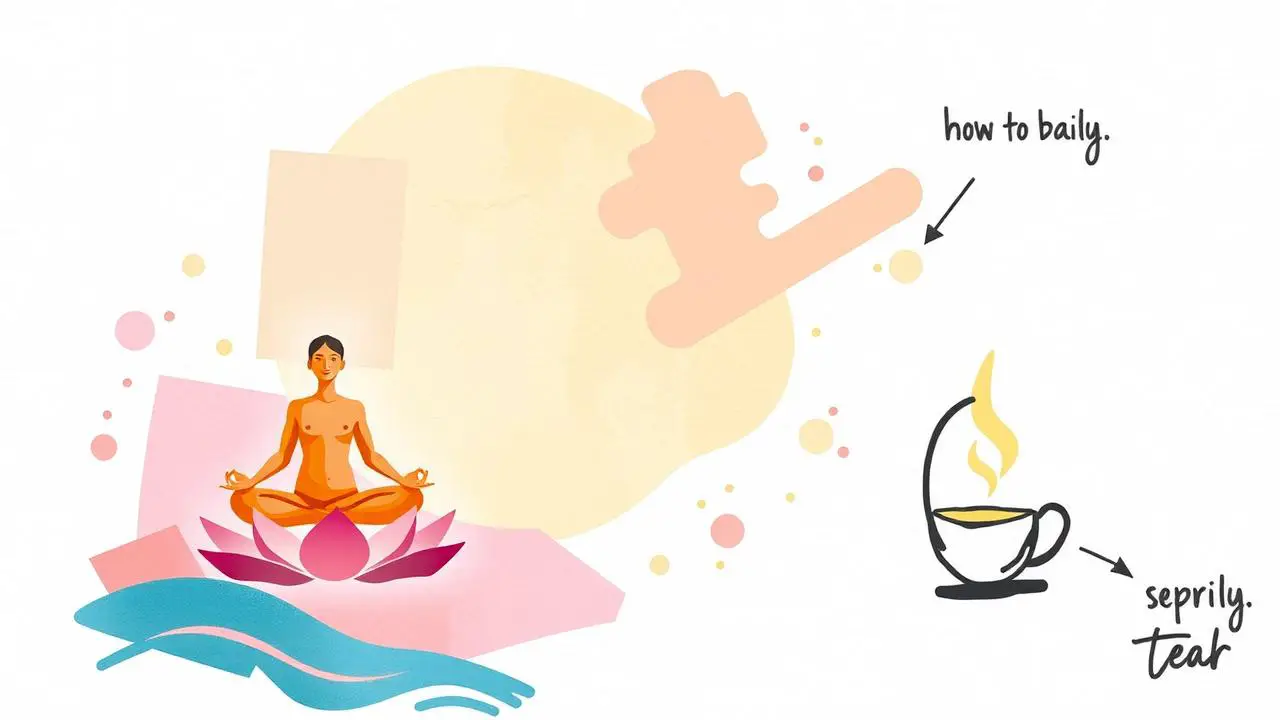Leadership is like a symphony – it requires everyone to play their part in harmony. But when the team is out of tune, it takes a special conductor to bring it back together. Mindfulness is the perfect conductor for teams that need to get back on track.
Mindfulness can help a team to be more aware of each other, to support each other better and to stay focused and centered on specific goals and objectives. Mindfulness also allows teams to become more productive by reducing stress levels which increases focus, problem solving abilities and creativity.
It’s not just for yogis and meditators, it can be used in the workplace to help teams become more effective, creating an environment where communication is open and honest with healthy boundaries in place for conflict resolution.
In this article, we’ll look at what mindfulness can do for a team. We’ll explore how mindfulness can help teams become more productive, creative, and collaborative.
I’ll also provide practical tips on how you can start incorporating mindfulness into your team.
Benefits Of Mindfulness In The Workplace
Mindfulness in the workplace can be a powerful tool to help foster a sense of understanding and connection between team members.
When practiced, it can promote meaningful dialogue, better collaboration, and a more positive working environment. In addition, it can be a source of inspiration and a key factor in boosting productivity.
Like a river that runs through the forest, mindfulness can create an open pathway of communication between team members. It encourages meaningful conversations, which in turn can be the source of innovative ideas, improved problem-solving skills, and a greater sense of trust between colleagues.
With greater understanding, team members can better appreciate each other’s point of view and respect their differences.
Mindfulness also has the power to reduce stress in the workplace. It allows team members to be present in the moment, to take a step back from their thoughts, and to focus more on the task at hand. This can be beneficial in helping them to remain productive and in minimizing any distractions.
It can offer many benefits to a team’s performance. By encouraging understanding and trust between team members, it can help to create an environment of collaboration and productivity.
And with its ability to reduce stress, it can help team members become more productive and efficient in their work. As such, it can be a powerful force for good in the workplace.
Next, let’s explore how building trust in a team with mindfulness can further improve team performance.
Building Trust In A Team With Mindfulness
Mindfulness can do wonders for a team’s ability to build trust. When practiced, mindfulness can provide a sense of understanding and empathy that helps to create an open and trusting environment.
Here are five ways that mindfulness can help to build trust in a team:
- It encourages self-awareness. Being mindful can help team members become more aware of their own thoughts, feelings, and reactions. This can help to create a safe and comfortable atmosphere where everyone can express themselves without judgement.
- It develops empathy. Mindfulness can help team members to be more conscious of their interactions with others and to be more empathetic to their teammates. This can create a more supportive team dynamic and foster understanding and trust.
- It builds connection. Mindfulness can help team members to be more mindful of their relationships with others. This can lead to stronger connections between teammates, and a sense of mutual understanding.
- It increases collaboration. When team members are mindful of their interactions and are more aware of their own thoughts and feelings, they can become more open to collaboration and creative problem solving.
- It encourages communication. Mindfulness can help team members to be more conscious of their communication with others. This can help to create a more open and honest dialogue between team members and help to build trust.
With mindfulness, teams can create a strong foundation of trust and understanding that will be beneficial for everyone.
Rather than focusing on the steps to take, mindfulness can help to create an atmosphere of trust and collaboration that will help teams to succeed.

Promoting Communication With Mindfulness
The second benefit of having a mindful team is the promotion of communication. Mindfulness allows us to tune into our own thoughts and feelings, as well as those of the people around us.
By taking the time to listen and understand, we can create an environment of trust and respect, which in turn encourages more open communication.
Through careful communication, team members can be honest and open about their ideas and feelings. This helps to create a space for collaboration and connection.
Moreover, mindfulness can help us to become aware of our blind spots. When we become aware of our own biases and assumptions, we can become more open and receptive to other perspectives.
By understanding that everyone has their own unique way of seeing the world, we can start to create a shared understanding and bridge the gap between our points of view.
In order to reap the benefits of mindful communication, it’s important to practice it every day. To create meaningful conversations, team members must be willing to listen to each other. They must also be willing to share their thoughts and feelings with each other.
By doing so, they can create an environment of mutual understanding and respect. From there, the sky’s the limit for what a team can accomplish.
With that in mind, let’s move on to exploring how to implement mindfulness in the team.
How To Implement Mindfulness In The Team
Mindfulness is an important tool for promoting communication and collaboration within a team.
While it can take some getting used to, implementing mindfulness in the workplace can have tremendous benefits for the team.
Here are a few ways to get started:
- Set aside time each day for a group mindfulness practice. This can be as simple as taking a few moments to ground yourself and to bring your focus back to the present.
- Encourage team members to take regular breaks throughout the day. This can help to reduce stress and to keep everyone focused and productive.
- Take time to appreciate the small wins. Celebrating progress, no matter how big or small, can help to keep everyone motivated.
- Practice having mindful conversations. This means listening carefully to each other, speaking with respect, and having patience when engaging in dialogue.
By taking the time to incorporate mindfulness into the workplace, teams can foster an environment of understanding and collaboration.
Also see: What is a Mindfulness Business Charter?
This can help to strengthen relationships, boost morale, and increase productivity. Without further ado, let’s explore how mindfulness can help to develop empathy within the team.
Developing Empathy Through Mindfulness
Mindfulness has been proven to help foster empathy in the workplace. When people take a few moments to reflect on their feelings, it can help them understand what their colleagues are going through.
Studies have shown that when individuals practice mindfulness, they can be better at empathizing with others.
By deepening their understanding of those we work with, teams can better connect with each other and build strong relationships. This can help to create an environment of trust and collaboration, which can ultimately improve team performance.
By being mindful, teams can also gain a better understanding of the different points of view each person brings to the table. This can help to build a culture of respect, allowing each individual to feel heard, appreciated, and valued.
Moving towards the next step in fostering a team atmosphere, mindfulness can also be used to encourage creative problem-solving.
Encouraging Creative Problem-Solving With Mindfulness
Mindfulness can also be used to encourage creative problem-solving in a team.
By taking a few moments to reflect on the situation and the situation at hand, team members can gain a better understanding of the situation.
This process allows for a deeper understanding of the issue, and can help to identify possible solutions that may have been overlooked.
What creative solutions can be found when we take the time to be mindful of the current situation?
Through mindfulness, team members can also foster a sense of openness and collaboration that encourages creative problem-solving.
By allowing individuals to be present in the moment and to focus on the bigger picture, they can gain a better understanding of their own thoughts and feelings, and identify how their ideas and perspectives can be used to find the best solution.
With this understanding, team members can work together to solve challenges in ways that promote innovation and growth.
Without having to say a word, mindfulness can be a powerful tool in helping a team to identify and pursue effective solutions. By taking a mindful approach to problem solving, team members can develop a greater sense of connection and understanding with one another, and create an environment that is conducive to creative and innovative thinking.
Taking the next step to explore the role of mindfulness in conflict resolution can further strengthen the team dynamic.
Mindfulness And Conflict Resolution
Mindfulness can be incredibly helpful for resolving conflicts within a team. One of the key benefits of mindfulness is that it helps us to see things from different perspectives, and to understand the motivations of others.
It can help us to recognize our emotions and to express them in a way that won’t cause further rifts in the team. This can be invaluable in getting past disagreements and coming to an agreement that works for everyone.
With mindfulness, teams can learn to recognize potential sources of conflict before they become an issue. It can help everyone to understand the consequences of their actions, and to be more aware of how their behavior could affect the team dynamic. This can lead to more positive interactions between team members and help to foster a supportive environment.
In short, mindfulness can be a powerful tool for diffusing and resolving conflicts in teams. By helping us to stay in the moment, it can give us the insight and understanding that we need to work through our disagreements and come to a resolution that works for everyone.
From improving communication to enhancing understanding, the benefits of mindfulness are virtually limitless in resolving conflicts.
And with that, we come to the next step: enhancing productivity with mindfulness.
Enhancing Productivity With Mindfulness
Mindfulness has the potential to do more than just resolve conflicts – it can also help to enhance productivity within a team.
By taking a few moments each day to focus on mindfulness, team members can tap into their inner resources to remain focused and productive. Imagine your team being able to finish tasks more quickly and efficiently, with less stress and distractions getting in their way.
In today’s world, where we are constantly bombarded by emails and notifications, it can be difficult to stay focused on the task at hand.
Mindfulness can be a powerful tool to help individuals and teams stay on track, and to prevent multitasking from becoming a habit.
By taking a few moments each day to focus on the present moment, team members can gain the mental clarity to stay focused and productive, become more aware of their distractions, and become more aware of their emotions.
Mindfulness can also help to reduce stress and improve team morale. Taking a few moments each day to focus on the present moment can help reduce expectations and the pressure of deadlines, and promote a better sense of well-being.
Mindfulness can also help to improve communication within the team, by encouraging members to listen more deeply and empathize with one another.
From enhancing productivity to reducing stress and distractions, mindfulness can be a powerful tool to help teams reach their goals. Next up, let’s look at how mindfulness can help teams overcome stress and distractions.
Overcoming Stress And Distractions With Mindfulness
One of the core benefits of mindfulness is it can also be incredibly effective in helping to reduce stress and distractions. It’s no secret that stress and distractions can be extremely bad for a team’s performance, and it’s important to be able to focus on the job at hand.
Satirically speaking, it’s like having a team of ants in a jar; if the lid is opened and something disturbs them, they’ll all scatter and go their own way, never to return.

Fortunately, mindfulness can help to keep the lid firmly shut, ensuring that the team remains focused and productive.
Mindfulness encourages us to take a step back and observe our thoughts and feelings, rather than getting caught up in them.
This can help us to identify and address any stressors that may be affecting our performance. It can also help us to identify any distractions that may be preventing us from reaching our goals.
Mindfulness also helps to cultivate an environment of openness, enabling team members to communicate their feelings in a safe and productive manner.
This can help to build a sense of trust and understanding that can be invaluable when it comes to achieving success as a team.
By utilizing the power of mindfulness, teams can effectively combat stress and distractions, allowing them to stay focused and productive. It’s an invaluable tool that can help to unlock the full potential of any team.
Armed with the knowledge of what mindfulness can do to help combat stress and distractions, we can now look to the next important topic: managing change with mindfulness.
Managing Change With Mindfulness
Managing change with mindfulness is an important skill for any team. It can be easy to get overwhelmed by the changing environment around you, but with the help of mindfulness, we can find control and find balance.
One way to think of managing change with mindfulness is to think of it like a river. When the water is still, it’s easy to stay in control and enjoy the peace and serenity. But when the river is tumultuous, it’s much more difficult to stay afloat. Mindfulness can be like a boat in the river, it can help us stay afloat and navigate the choppy waters.
With mindfulness, we can learn to recognize the changes that are happening around us. We can also learn to accept them and let go of our resistance. This can help us to stay focused and keep our head above water. By taking a step back and observing the big picture, we can gain clarity and perspective.
Mindfulness can also help us to better understand the way our team works. We can take the time to identify how each team member is reacting to any changes that are occurring. This can help us to better understand each other and work together more effectively. We can also be more aware of our own reactions to change and learn how to respond to it in a more productive manner.
Managing change with mindfulness can help any team stay on course, even when the waters are turbulent. By learning to accept and observe the changes that are happening around us, we can gain clarity and perspective that can help us to navigate the choppy waters and stay in control.
Frequently Asked Questions
What Are The Most Effective Techniques For Practicing Mindfulness In The Workplace?
Mindfulness can be a great way to help a team build better relationships, enhance collaboration, and improve communication.
By taking the time to pause and bring awareness to the present moment, we can gain a better understanding of ourselves and our colleagues, and create a more positive and productive workplace.
But what are some of the most effective techniques for practicing mindfulness in the workplace?
One of the most popular mindfulness exercises is the practice of mindful breathing.
This involves focusing on the breath, paying attention to the sensation of air entering and leaving the body.
Taking a few moments to focus on your breathing can help to center your thoughts and bring a sense of calm to the body. By taking a few mindful breaths, we can bring our attention back to the present moment and be more mindful of our actions.
Another useful technique is the practice of mindful movement.
This involves taking a few minutes to move the body in a slow and gentle manner, with emphasis on being aware of the sensations of the body and the environment.
Mindful movement can help to reduce stress and anxiety, and can be a great way to increase focus and productivity.
Mindful listening is another great way to practice mindfulness in the workplace.
This involves taking a few moments to listen carefully to what our colleagues are saying, being aware of the words, the tone, and the body language.
Mindful listening can help to build empathy and respect, and can lead to better communication and collaboration.
Finally, mindful eating can be a great way to bring more awareness to the present moment.
This involves taking the time to focus on the taste, texture, and smell of the food that we are eating, and being aware of the physical sensations in the body as we eat.
Mindful eating can be a great way to promote wellbeing and reduce stress.
How Long Does It Take For A Team To Experience The Benefits Of Mindfulness?
When it comes to reaping the benefits of mindfulness in the workplace, it’s important to remember that Rome wasn’t built in a day.
Mindfulness is a practice that requires patience, dedication, and consistency in order to see real results. So, how long does it take for a team to experience the benefits of mindfulness?
The truth is, it depends on the team. Some teams may find that they begin to see results in as little as two weeks, while others may take several months to see a noticeable difference. Just like with any new practice, the key is to stick with it and remain consistent.
See: How Long Does It Take To Form A Habit?
It’s like starting a new exercise routine. At first, it can be difficult and challenging, but if you stick with it, you’ll start to notice changes in your strength and stamina.
When teams practice mindfulness consistently, they may start to see changes in the way they approach their work and the way they interact with each other.
The length of time it takes for a team to experience the benefits of mindfulness is not a sprint, but a marathon, and just like a marathon you need regular practice. Scheduling regular mindfulness training, at both the individual level and team level, will be hugly beneficial.
With the right approach and dedication to the practice, you can find that it’s a journey that’s well worth taking. Make sure the team leaders understand the role of team mindfulness so they can be a promotor and not a detractor.
It’s like slowly turning the dial of a radio until you find the perfect station – it takes time and effort, but it’s a journey that will bring great rewards.
How Can A Team Maintain A Mindful Attitude Over A Long Period Of Time?
Maintaining a mindful attitude within a team is an important step in ensuring lasting benefits. To make sure that these benefits are long-lasting, it is essential to develop a mindful practice that can be repeated on a daily basis.
This can include setting a time each day for the team to come together and practice mindfulness exercises, or having a designated person to lead mindfulness activities on a regular basis.
It is also important to create an environment that encourages mindful thinking.
This could include creating a mindfulness charter and having team members check in with each other to ensure that everyone is feeling their best, or take a few moments each day to reflect on their experiences.
By creating a safe and supportive environment, team members will be more likely to engage in mindful activities and to experience the benefits of mindfulness.
Finally, it is important to have a plan for sustaining the team’s mindfulness practice over time. This could involve setting goals and objectives, setting aside time each week to review progress, or scheduling regular check-ins and team meetings.
By creating a structure that encourages team members to come back to their mindful practice on a regular basis, they will be more likely to experience long-term benefits.
Mindfulness can be a powerful tool for teams of any size, but it is only effective when practiced regularly. By taking the time to develop a mindful practice and creating an environment that encourages mindful thinking, teams can ensure that they experience the lasting benefits of mindfulness for many years to come.
What Are The Potential Downsides To Introducing Mindfulness Into The Workplace?
While introducing mindfulness into the workplace can have many benefits, it’s important to consider the potential downsides.
There is a risk of employees feeling overworked. Mindfulness can be a powerful tool for increasing productivity, but if it’s not managed properly, it can lead to employees feeling burned out. This can result in lower morale, higher turnover, and decreased performance.
Additionally, it’s important to consider the cultural implications of introducing mindfulness into the workplace. This is especially true for organizations that have a diverse workforce.
Mindfulness can be beneficial for individuals of all backgrounds, but it’s important to ensure that everyone feels comfortable and respected when introducing these practices.
Overall, introducing mindfulness into the workplace can be a great way to boost employee morale and productivity. However, it’s important to consider the potential downsides before implementing any new practices. By taking the time to understand the potential risks and benefits, you can ensure that your team can reap the rewards of mindfulness without any of the drawbacks.
How Can Mindfulness Help With Improving Employee Morale?
When it comes to improving employee morale, mindfulness can offer a powerful alternative to traditional methods.
By introducing mindfulness into the workplace, organizations can create a culture of support and understanding and create an environment where their employees can make the most of their potential.
The practice of mindfulness can help to promote a sense of relaxation and self-awareness among employees.
This can lead to improved interpersonal relationships, allowing for better communication and collaboration. Mindfulness also helps to reduce stress and anxiety levels, which can be damaging to an individual’s well-being and productivity.
Furthermore, introducing a mindfulness program into the workplace can help to create a more positive work environment.
Mindfulness encourages employees to focus on the present moment and to be mindful of their thoughts and emotions.
This can help to reduce the occurrence of negative thoughts and feelings, which can often lead to low morale.
By encouraging employees to be aware of their thoughts, feelings, and actions, they can help create a sense of unity and connectedness in the office.
This boost in morale can lead to increased job satisfaction and improved productivity.
Mindfulness can be a powerful tool for improving employee morale. By introducing mindfulness into the workplace, organizations can create a more positive and supportive environment, leading to improved productivity and job satisfaction. With the right approach and attitude, mindfulness can be a great asset to any team.
How Does Mindfulness Benefit Team Performance in the Workplace?
Incorporating mindfulness techniques can boost workplace performance with team mindfulness. By practicing mindfulness, employees can improve focus, reduce stress, and enhance communication skills. This can lead to better team cohesion, increased productivity, and higher job satisfaction. Ultimately, mindfulness can create a more positive and efficient work environment.
Conclusion
Mindfulness is a powerful tool for any team to utilize, especially in times of stress and uncertainty. It can help to cultivate focus, clarity, and collaboration, leading to a more productive and successful team environment.
Mindfulness can also provide an opportunity for team members to connect with each other on a deeper level, creating a sense of trust and unity.
This can lead to better communication and problem-solving within the team, as well as a stronger sense of belonging.
With the right approach, mindfulness can be an invaluable asset for teams of all sizes. By helping to cultivate focus, clarity, collaboration, and connection, it can help teams to reach their goals in a more efficient and effective manner.
Sources
https://www.frontiersin.org/articles/10.3389/fpsyg.2022.992575/full
https://www.semanticscholar.org/paper/3c1328005691ee8d41eae8fe39bff6375ac318a0
https://www.semanticscholar.org/paper/7d971c5a831dcc042d5d7d6c54d6ee9f758d6173
https://www.semanticscholar.org/paper/39e1d5013846d3794ed19166d88bb39b38406747
https://www.semanticscholar.org/paper/922b0315798ecd923da787ce2b8ecf9965ee4586
https://changestrategists.com/what-is-meant-by-management-of-change/




